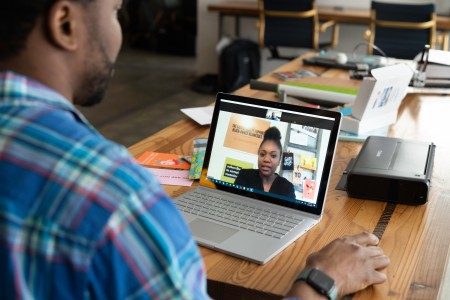How Business Continues To Change...
 Since the COVID-19 epidemic touched everything, we have witnessed evolutionary shifts in how firms do business in just a few months.
Since the COVID-19 epidemic touched everything, we have witnessed evolutionary shifts in how firms do business in just a few months.
When businesses and restaurants closed, they were forced to consider how to reach out to customers online. As businesses shuttered their doors, a frenzied race followed to guarantee that staff could continue to work from home productively.
Every business nowadays is thinking about how to become more digital and automated. These tendencies existed before the coronavirus, but they have now progressed to the point where every firm must think like a technological company. While half of the businesses said establishing or revising their business continuity plan was very or extremely difficult, it stands to reason that many organizations may still face challenges.
When it comes to transforming short-term IT solutions into long term sustainability, there are a few factors to keep in mind:
Many organizations deployed solutions without the typical level of planning or design because of the haste to enable remote work that was put in place a few months ago. With more time to consider long term improvements, we are seeing a willingness to revisit previous designs and improve them by addressing issues like:
- Is our network safe now that it can be accessed remotely on a larger scale?
- How can we make the most of our assets and get the most out of them?
- How can we cut down on our total spending, especially if a temporary solution was over-provisioned and needs to be scaled back when more people return to their regular jobs?
Most organizations, whether in healthcare, retail, groceries, business to business, or other industries, have been compelled to accept e-commerce or virtual consumer interaction strategy if they had not already.
One approach to help consumers tailor their requirements without decreasing direct physical interaction is to invest in cognitive services such as chatbots and virtual assistants. Robotic process automation may also liberate staff from tedious activities, allowing them to focus more directly on meeting client demands.
When the pandemic hit, many organizations turned to collaboration platforms like Microsoft Teams or zoom for a single functionality, like video conferencing, as a means of holding virtual meetings. However, they are not utilizing these technologies to their maximum potential.
Those unplanned brainstorming sessions that come with physical meetings are often absent from remote work — they can be done virtually as well, but most people still do not use virtual collaboration on shared documents, group task management, and other tools.
As individuals combine their personal and professional lives, the promotion of a good work-life balance is more prominent than ever. Trust is essential, and flexible hours should be encouraged as businesses contemplate ways to return employees to a clean and safe work environment. That starts with the proper operational processes to ensure the essential safeguards are in place, and intelligent technology may help with that as long as IT is in sync with the rest of the organization.
IT personnel have worked extremely hard during this time to ensure that workers can do what they need to do from home. If you do not have your own team of IT employees, look no further. Rowe Group can help you off and onsite. Contact us today. Let us create a safer and better work environment together.
